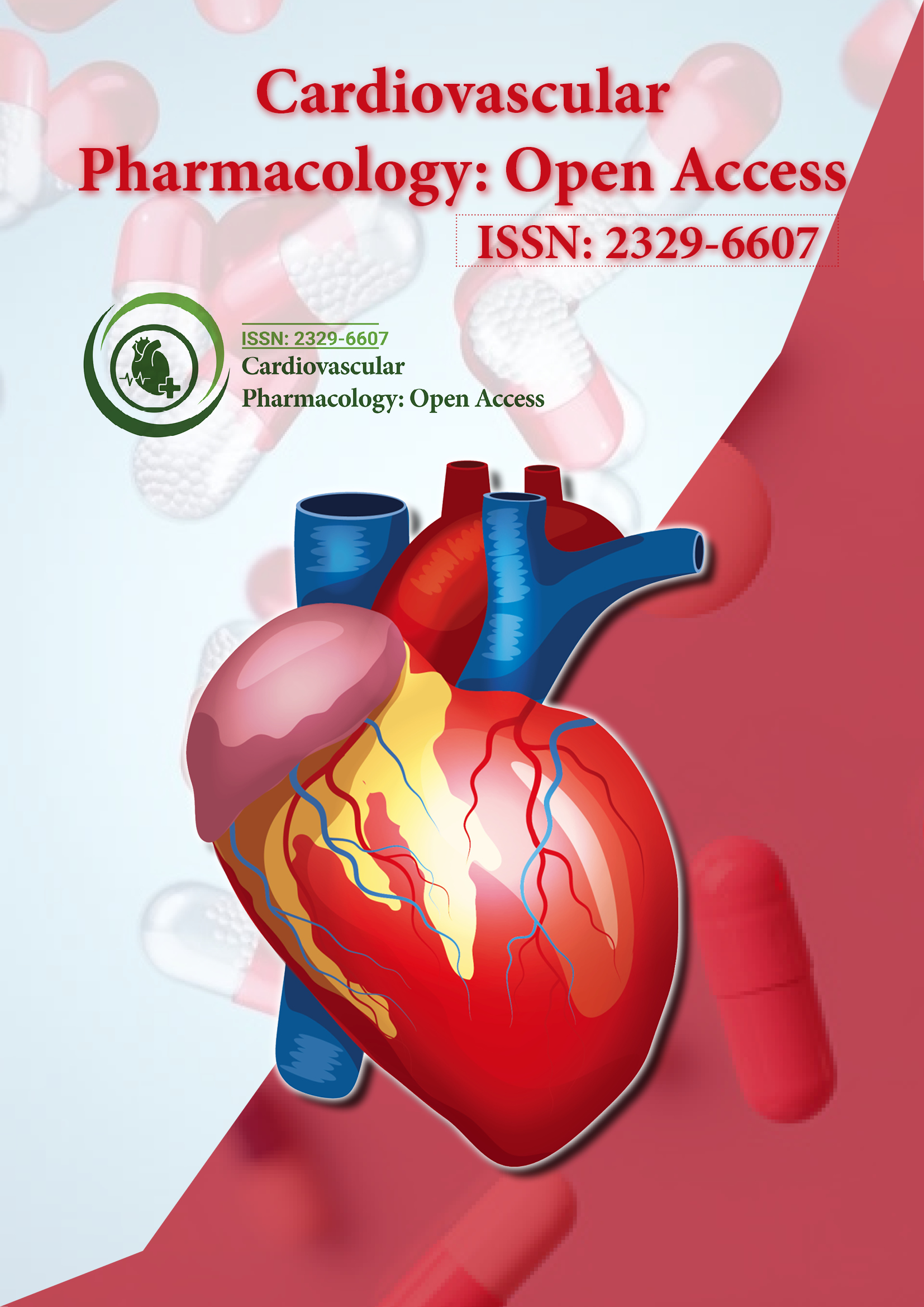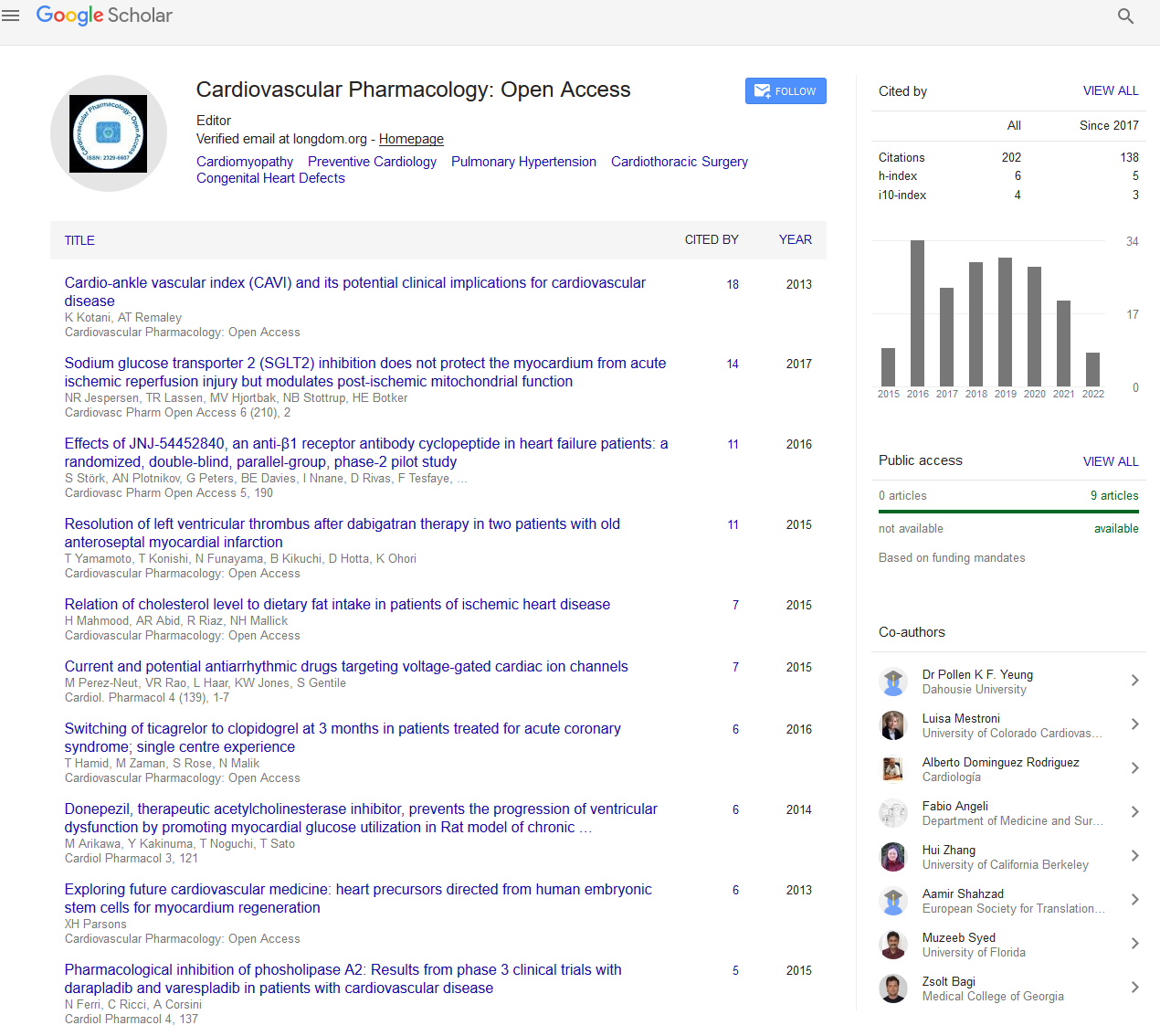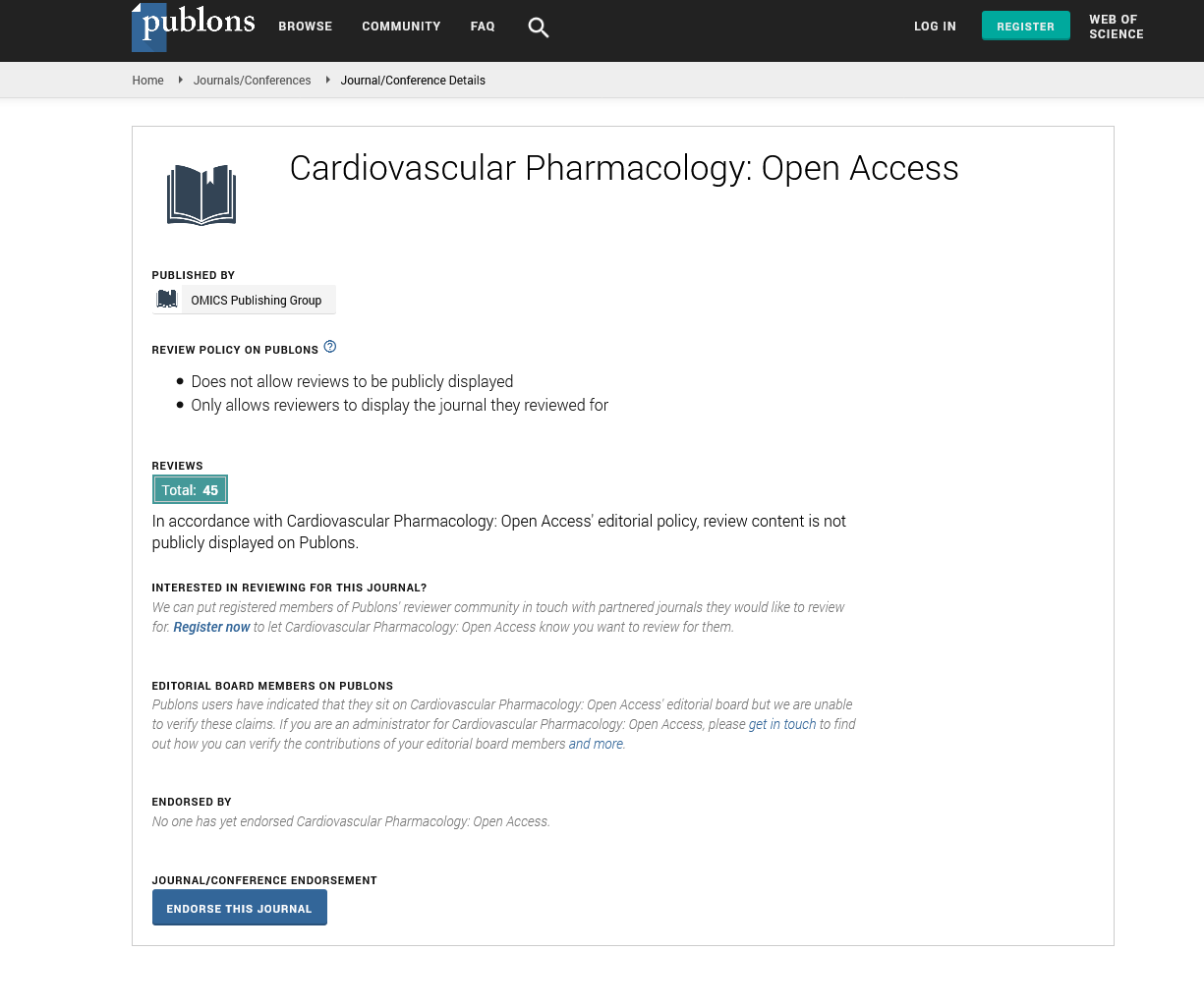Indexed In
- Open J Gate
- Cosmos IF
- RefSeek
- Hamdard University
- EBSCO A-Z
- OCLC- WorldCat
- Publons
- Geneva Foundation for Medical Education and Research
- Euro Pub
- Google Scholar
Useful Links
Share This Page
Journal Flyer

Open Access Journals
- Agri and Aquaculture
- Biochemistry
- Bioinformatics & Systems Biology
- Business & Management
- Chemistry
- Clinical Sciences
- Engineering
- Food & Nutrition
- General Science
- Genetics & Molecular Biology
- Immunology & Microbiology
- Medical Sciences
- Neuroscience & Psychology
- Nursing & Health Care
- Pharmaceutical Sciences
Opinion Article - (2025) Volume 14, Issue 1
Cost Coverage and Care in the Socioeconomic Divide in Cardiometabolic Treatments
Lina Moretti*Received: 19-Feb-2025, Manuscript No. CPO-25-28926; Editor assigned: 21-Feb-2025, Pre QC No. CPO-25-28926 (PQ); Reviewed: 07-Mar-2025, QC No. CPO-25-28926; Revised: 14-Mar-2025, Manuscript No. CPO-25-28926 (R); Published: 21-Mar-2025, DOI: 10.35248/2329-6607.25.14.416
Description
Obesity and cardiovascular disease are major global health challenges, contributing to significant morbidity, mortality and healthcare expenditures. In recent years, pharmacological interventions such as GLP-1 receptor agonists, SGLT2 inhibitors, PCSK9 inhibitors and dual-acting agents like tirzepatide have demonstrated significant potential not only in weight management but also in reducing cardiovascular events. However, despite these clinical breakthroughs, profound disparities in access to these therapies persist, often reinforcing and exacerbating existing health inequities across socioeconomic, racial and geographic lines.
At the heart of the disparity is the economic inaccessibility of many modern pharmacotherapies. Drugs like semaglutide and tirzepatide are costly, often exceeding hundreds or thousands of dollars monthly. For many patients, especially those in low- and middle-income brackets, the out-of-pocket expenses are prohibitive. Even within high-income countries, insurance coverage for anti-obesity medications remains inconsistent and limited. Public health systems often do not prioritize coverage for weight-loss therapies, considering them lifestyle adjuncts rather than essential interventions, despite growing evidence of their preventive value in cardiometabolic disease.
These systemic barriers are most acutely felt by underserved populations. In the United States, Black, Hispanic and Native American communities, which bear a disproportionate burden of obesity and cardiovascular disease, are significantly less likely to receive prescriptions for these newer therapies. Multiple studies have documented provider bias, differences in access to specialty care and gaps in patient education as factors contributing to this divide. Furthermore, clinical trials for many of these agents have historically underrepresented minority groups, raising questions about efficacy and safety data in those most affected and fueling hesitancy among both patients and providers.
Geographic disparities are another important dimension. Rural communities often face a shortage of endocrinologists, cardiologists and obesity medicine specialists trained in the use of advanced pharmacologic agents. This shortage is compounded by logistical challenges such as long travel distances, limited transportation options and reduced digital connectivity, which obstruct telemedicine outreach and prescription continuity. Patients in such areas often remain reliant on outdated or less effective therapies, despite being at higher cardiometabolic risk.
Another overlooked barrier is health literacy. Many patients are unaware of pharmacological options for weight loss and cardiovascular prevention, particularly those from disadvantaged or low-education backgrounds. Moreover, cultural stigmas around obesity, skepticism towards pharmacotherapy and fears of side effects can deter individuals from seeking treatment, especially if not supported by empathetic and informed healthcare providers.
Addressing these disparities requires both policy-level reform and systemic realignment. First, there must be an explicit recognition of obesity as a chronic, relapsing disease requiring medical management, rather than a failure of personal willpower. Governments and insurers must reevaluate coverage policies and prioritize inclusion of anti-obesity and cardioprotective drugs in essential medicines lists. Expanding public and private insurance coverage to include these therapies would significantly reduce financial barriers and expand treatment access.
Provider training and education also need attention. Many primary care physicians remain unfamiliar or uncomfortable with prescribing newer agents due to concerns about cost, side effects, or lack of long-term data. National guidelines should be updated and disseminated widely to include recommendations on the equitable prescription of pharmacotherapies for obesity and cardiovascular prevention. Culturally competent education campaigns targeting both clinicians and patients can enhance trust, reduce stigma and improve informed decision-making.
Moreover, expanding participation of underrepresented minorities in clinical trials is important for ensuring broader applicability of safety and efficacy data. Regulatory agencies and pharmaceutical companies must be held accountable for enrolling various populations in studies and publishing subgroup analyses. This approach not only improves transparency but also encourages broader confidence in new therapies among marginalized communities.
Ultimately, the potential of modern pharmacotherapy for weight loss and cardiovascular prevention should not be confined to the wealthy or well-insured. As science advances, equity must remain a core principle guiding the development, dissemination and delivery of treatment. Without addressing the social determinants of health and systemic biases embedded within the healthcare infrastructure, we risk deepening the very inequalities these innovations are meant to alleviate. Ensuring fair access is not only a clinical imperative but a moral one fundamental to the idea that every individual, regardless of income, race, or geography, deserves an equal opportunity for health.
Citation: Moretti L (2025). Cost Coverage and Care in the Socioeconomic Divide in Cardiometabolic Treatments. Cardiovasc Pharm. 14:416.
Copyright: © 2025 Moretti L. This is an open access article distributed under the terms of the Creative Commons Attribution License, which permits unrestricted use, distribution, and reproduction in any medium, provided the original author and source are credited.


